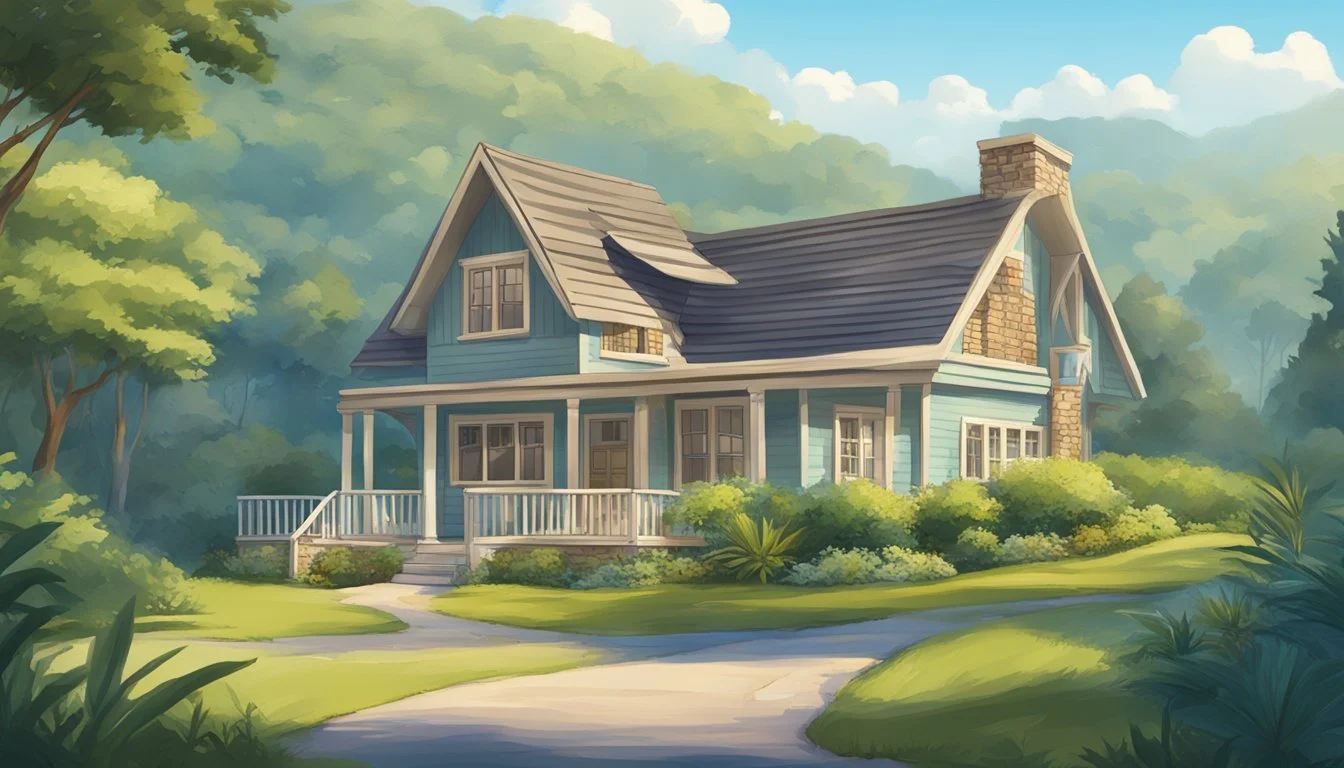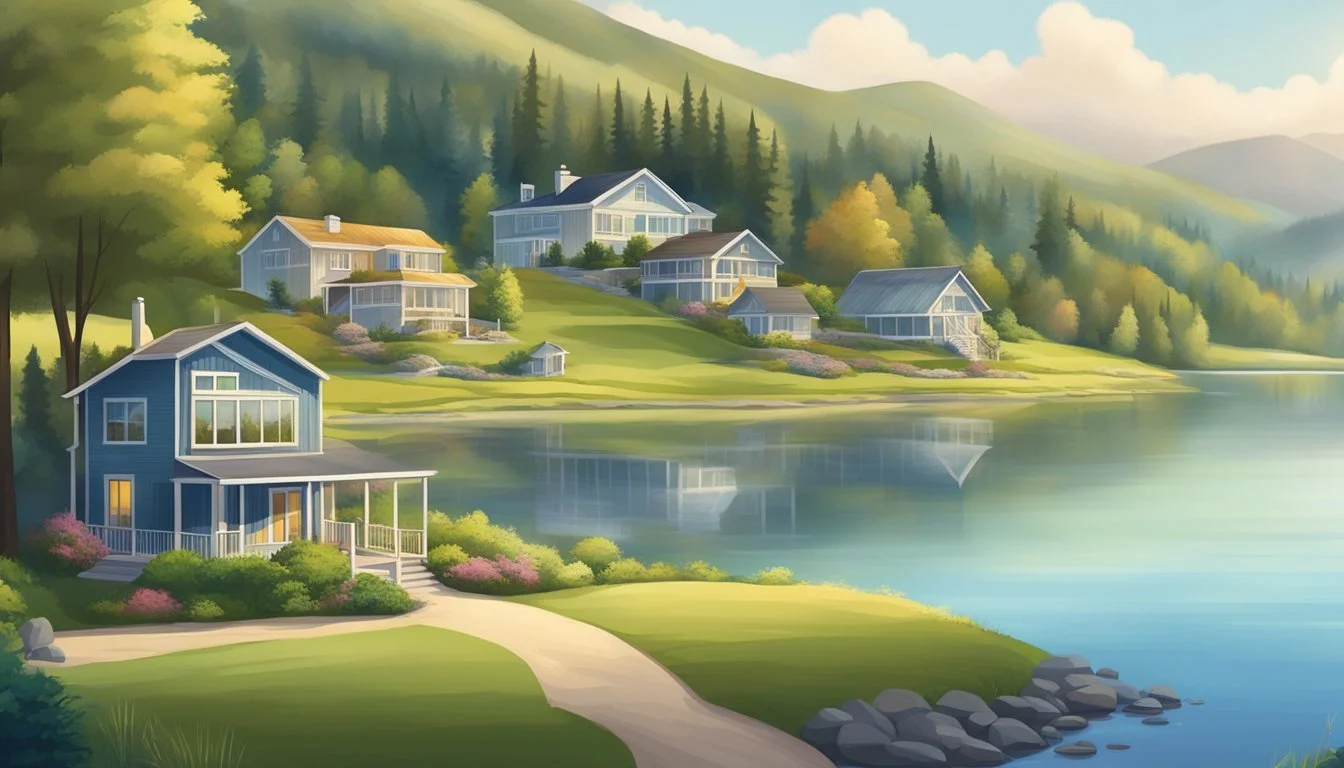Free Land for Vacation Homes
Affordable Dream Retreats
Free Land for Vacation Homes: Affordable Getaway Options
The allure of owning a vacation home has surged, especially following the pandemic. Many people are on the lookout for affordable getaway options that offer both convenience and a touch of luxury. LandZero offers land parcels as low as $3,000, with annual taxes around $15, making it a cost-effective solution for those dreaming of a personal retreat.
Demand for such properties has led to a variety of choices spanning across different regions. Areas like Cullowhee, NC, nestled in the Great Smoky Mountains, and Veliko Tarnovo, Bulgaria, known for its historic charm and stunning views, provide budget-friendly alternatives. Each location offers unique benefits, catering to diverse preferences among potential buyers.
Affordable options are not just limited to land parcels but extend to fully built homes in certain regions. For instance, an oceanfront one-bedroom condo listed at $184,500 showcases how these properties can meet both budget and lifestyle needs. From emerging markets in Italy to mountain getaways in Arizona, the range of possibilities makes it feasible for many to consider such investments.
Understanding the Concept of Free Land in the United States
The idea of obtaining free land for vacation homes in the United States is rooted in historical and modern practices. These opportunities provide significant benefits, but they come with specific requirements and locations.
History of Homesteading and Free Land Availability
The practice of offering free land in the US began with the Homesteading Act of 1862, signed by President Abraham Lincoln. This act aimed to encourage westward expansion by granting 160 acres of public land to applicants at a minimal cost, provided they lived on and improved the land. Approximately 260 million acres, or about 10% of the US, were settled under this act. Homesteaders often built homes, cultivated the land, and created new communities. Although the act was repealed in 1976, its legacy continues through various modern free land programs designed to attract new residents and foster growth in smaller communities.
Modern Free Land Programs and Qualifications
Today, several towns in the US offer free land to attract new residents. These programs often target individuals willing to build homes and contribute to local economies. Unlike historical homesteading, modern initiatives come with specific qualifications. For instance, areas such as Lincoln, Kansas, and Marne, Iowa, may require applicants to construct a house within a set timeframe, usually one year, and meet minimum square footage requirements. Some towns provide additional incentives, such as waived building permits or free utility hookups, to make the move more appealing. It's essential for interested parties to thoroughly research and meet all criteria to take advantage of these opportunities.
Locations Offering Free Land for Vacation Homes
Several locations across the United States are currently offering free land for those interested in vacation homes. Richland and Claremont in Minnesota are notable examples, providing lots with incentives like free electrical hookups. These programs aim to revitalize small towns by attracting new families and stimulating the local economy. Other places, such as Alaska, offer land in more remote, nature-centric environments ideal for a vacation getaway. Prospective applicants should consider the climate, community amenities, and nearby attractions when choosing a location for their vacation home. It’s crucial to select a spot that aligns with personal preferences and lifestyle goals.
Evaluating Vacation Home Affordability
Evaluating the affordability of a vacation home involves understanding market trends, considering home prices, and assessing long-term investment viability. Here is a closer look at these key aspects.
Assessing Real Estate Market Trends
Understanding the real estate market is crucial. For instance, Realtor.com notes that certain areas, such as Lake Havasu and Flagstaff in Arizona, are attracting attention for their comparatively affordable real estate.
Key Market Indicators:
Median Sales Price: This can indicate overall affordability. For example, vacation homes in Branson, Mo., have a median price of $299,000.
Location Trends: Markets like Menfi or Taormina in Italy show varying price levels based on location popularity.
Monitoring these trends helps in identifying undervalued areas with good potential.
Home Price Considerations
Finding the best prices for vacation homes requires careful evaluation. Realtor.com highlights regions where vacation homes can be more affordable, such as Branson, Missouri, with a median sales price significantly lower than national averages.
Price Ranges and Factors:
Range: Some areas offer homes starting at around $350,000.
Comparative Options: Lake Havasu is noted for attracting buyers from higher-cost states due to its affordability.
Individuals should compare these prices against their budget and financial goals.
Long-Term Investment Viability
Determining if a vacation home is a viable investment requires looking beyond the initial purchase price. Long-term benefits, potential for rental income, and property appreciation are key factors.
Investment Factors:
Rental Income Potential: Vacation homes in tourist-heavy areas can provide substantial rental income.
Appreciation Prospects: Evaluating if the property will increase in value over time.
Maintenance Costs: Ensuring long-term affordability involves factoring in ongoing maintenance and property management costs.
Assessing these factors helps investors understand if a vacation home will meet their financial objectives.
Decisions should be made based on these detailed considerations to ensure the best investment in an affordable vacation home.
Destination Insights: Where to Find Your Getaway
This section explores the best locations for vacation homes, focusing on mountain retreats for elevated escapes, lakeside havens for waterfront relaxation, and rural or small-town charm for off-the-beaten-path experiences.
Mountain Retreats: Elevated Escapes
Mountain retreats are ideal for those who cherish breathtaking views and outdoor activities. Colorado offers stunning spots like Aspen and Breckenridge, known for their ski resorts and hiking trails.
In the Great Smoky Mountains, one can find charming cabins nestled amidst lush forests, providing a serene escape. North Carolina's Asheville is another favorite, combining vibrant arts with scenic mountain vistas. These elevated destinations promise a rejuvenating experience away from the hustle and bustle.
Lakeside Havens: Waterfront Relaxation
Lakeside locations bring a sense of peace and tranquility along with recreational water activities. The Pocono Mountains in Pennsylvania are perfect for those looking to enjoy boating, fishing, and swimming. Lake Tahoe in California/Nevada is famous for its crystal-clear waters and year-round appeal, making it a prime spot for vacation homes.
In Minnesota, known as the "Land of 10,000 Lakes," areas such as Brainerd and Alexandria offer picturesque settings ideal for a waterfront retreat. These destinations provide a blend of relaxation and adventure, appealing to nature lovers.
Rural and Small Town Charm: Off-the-Beaten-Path
For those seeking a more laid-back experience, rural and small-town getaways are an excellent choice. Small towns like Flagstaff, Arizona offer a unique blend of history and natural beauty, perfect for a vacation home.
Fort Valley, Georgia, with its family-friendly atmosphere and charming cabins, is another great option. Additionally, places like Rutherfordton, North Carolina provide a blissful escape into nature, far from the urban rush. These destinations highlight the beauty of quieter locales, offering a peaceful retreat.
Financial Aspects of Owning a Vacation Home
Owning a vacation home involves multiple financial considerations, including taxes, utilities, overall cost, and financing options. Proper planning ensures that the investment remains affordable and sustainable over time.
Understanding Property Taxes and Utilities
Property taxes for vacation homes can differ significantly from primary residences. Tax rates may be higher, and some areas might have additional levies that apply to second homes. It's essential to check the local tax regulations to understand the exact costs.
Utility costs also need careful planning. Vacation homes often have variable usage patterns, affecting bills for electricity, water, and maintenance. Evaluate whether the seasonal usage aligns with budget expectations and consider installing energy-efficient systems to reduce costs.
Estimating Total Cost of Ownership
Calculating the total cost of ownership extends beyond initial purchase price. Prospective owners should include maintenance, property management fees, insurance, and potential improvements. Regular upkeep is essential to maintain the value and functionality of the property.
Consider seasonal maintenance needs that might arise, such as winterizing the property or preparing for the summer. A comprehensive budget forecast helps avoid unexpected financial burdens. Include a contingency fund for unexpected repairs and emergencies to better manage cash flow and sustain the property over the long term.
Exploring Financing Options
Financing a vacation home often involves different terms than primary residences. Interest rates can be slightly higher, ranging from 0.25% to 0.5% above regular mortgage rates. Lenders usually require a larger down payment, typically between 20% and 30%.
Evaluate various loan options, including traditional mortgages, home equity loans, and specialized vacation home financing. It's crucial to compare terms and conditions. Understanding the long-term financial commitment ensures that the purchase remains within reach without overstretching finances.
Exploring affordable financing solutions and consulting with financial advisors can provide tailored strategies suited to individual financial situations, ensuring that the vacation home investment is both enjoyable and economically viable.
Local Amenities and Attractions
When considering free land for vacation homes, it's important to evaluate the available local amenities and attractions. These factors can significantly enhance the overall experience of owning a getaway property and support the surrounding community.
Recreational Activities for Every Season
Communities offering free land for vacation homes often boast diverse recreational activities suitable for all seasons. In the summer, residents can enjoy boating, fishing, and swimming in nearby lakes and rivers. Popular spots like Cullowhee, NC, nestled in the Great Smoky Mountains, provide hiking and mountain biking trails.
Winter brings opportunities for snowboarding, skiing, and ice fishing. Locations such as Lake George, NY, transform into winter wonderlands with ample snow sports facilities. Year-round activities like wildlife watching, photography, and local festivals ensure there’s never a dull moment.
Proximity to Major Cities and Attractions
The proximity of vacation home sites to major cities and attractions increases accessibility and convenience. Destinations like Eureka Springs, with cabins priced below $250,000, offer a balance of seclusion and connectivity. Their locations often allow for easy day trips to urban centers for shopping, dining, and entertainment.
Potential buyers should consider areas like Destin, Florida, which not only offers picturesque white-sand beaches but is also within a short drive of major metropolitan areas. This combination provides vacation homeowners with both a serene retreat and access to city amenities.
Economic Benefits: Supporting Local Businesses
Owning a vacation home in these areas contributes to the local economy. Local businesses, such as restaurants, shops, and service providers, benefit from the influx of visitors and new residents. Popular places like Crystal Springs Resort offer special packages and deals, encouraging economic activity and growth.
Vacation homes in regions like Cullowhee, NC, or Lake George, NY, often have higher occupancy rates, drawing in tourists who support local artisans and markets. Investing in a vacation home can thus foster economic stability and growth for small towns and rural areas.
By choosing a vacation property in these regions, one not only enjoys personal leisure benefits but also plays a vital role in sustaining and enhancing the local community.
Demographic and Economic Influences on Vacation Home Areas
Demographic shifts and economic trends have significant impacts on vacation home markets. The following subsections explore specific influences such as population growth, urban migration, and the effects of remote work.
Population Growth and Urban Migration Trends
Population growth in certain regions fuels the demand for vacation homes. People moving from densely populated urban areas seek quieter, more affordable living spaces. This trend was accelerated by the COVID-19 pandemic, which highlighted the disadvantages of crowded cities.
Regions with lower costs of living become attractive alternatives. These areas offer mid-range home prices, making them ideal for middle and upper-middle-class buyers. For example, some vacation counties have median home prices around $245,000, which are considered affordable compared to major urban markets.
Increasing income levels also enable more people to invest in vacation properties. Individuals gaining wealth through rising wages or financial investments are more likely to purchase secondary homes. This influx can bolster local economies through property sales and increased spending in these regions.
Effects of Remote Work on Vacation Home Markets
Remote work has transformed the real estate landscape. With the ability to work from anywhere, many people opted for vacation homes as primary residences. This shift was particularly noticeable during the pandemic, which led to spikes in vacation home sales.
In 2021, data showed a 57.2% year-over-year increase in vacation home sales from January to April. The share of vacation homes among total existing-home sales also rose to 6.7%. These properties offered a viable solution for maintaining productivity while enjoying a better quality of life.
Remote work reduces the necessity of living in urban hubs. Individuals who previously faced high living costs in cities moved to regions with lower costs of living. These areas often boast natural beauty, less congestion, and a slower pace of life, which are highly appealing for both work and leisure.
The Future of Vacation Homes Post-Pandemic
The Covid-19 pandemic has fundamentally altered the landscape for vacation homes. Shifts in demand and investment resilience have emerged as key factors shaping the future.
Analyzing the Shift in Vacation Home Demand
The Covid-19 pandemic has significantly boosted the demand for vacation homes. With more people working remotely, the need for versatile living spaces has increased. Buyers are now seeking properties that offer reliable connectivity and comfortable home office environments.
The surge in demand has led to a nearly 30% rise in vacation home mortgage applications from 2019 to 2020. This trend shows that many see vacation homes not just as leisure getaways but also as practical workspaces. Inventory remains a challenge, though, as increased interest has outpaced the availability of properties.
Communities are also adapting to this new reality by updating rental regulations. Potential buyers must stay informed about these changes, especially if they aim to generate rental income. This evolving landscape provides both opportunities and challenges for future vacation homeowners.
The Resilience of Vacation Home Investments During Crises
Vacation home investments have shown remarkable resilience during crises. The post-pandemic period has seen a 16.3% increase in vacation home sales over 2019, outperforming general home sales growth. Natural disasters and pandemics can temporarily disrupt markets, but vacation homes quickly regain value as desirable assets.
Investors are aware of this resilience and see vacation properties as stable investments. The flexibility offered by these homes makes them attractive even during uncertain times. These properties serve dual purposes: personal retreats and income-generating assets.
The rising demand ensures that vacation homes remain a robust segment in real estate. This stability is crucial for individuals looking to diversify their investment portfolios with properties that have proven to weather crises effectively.









